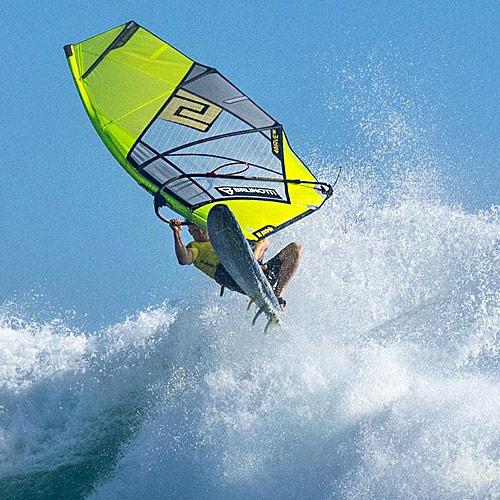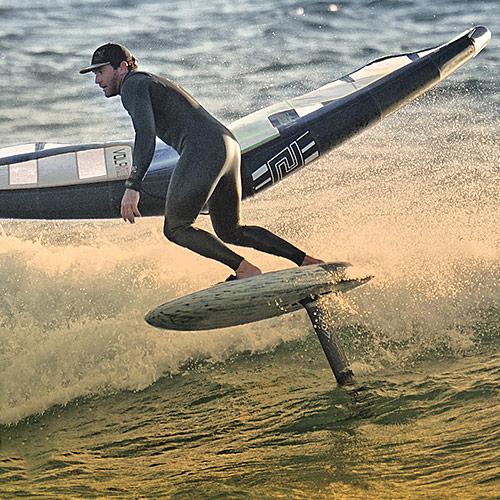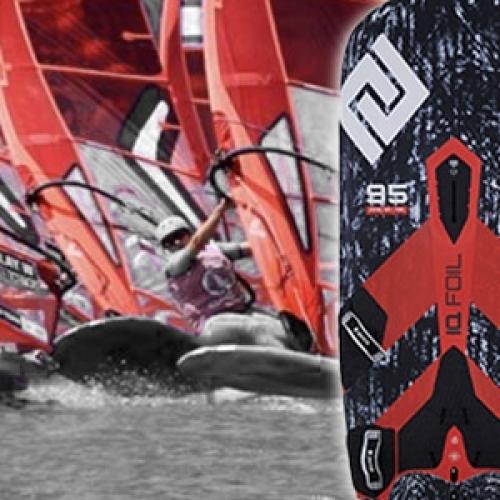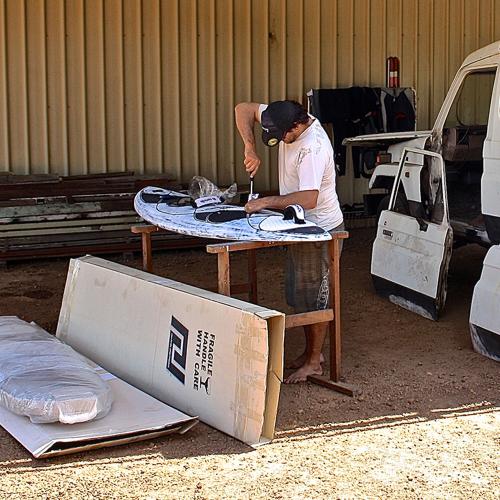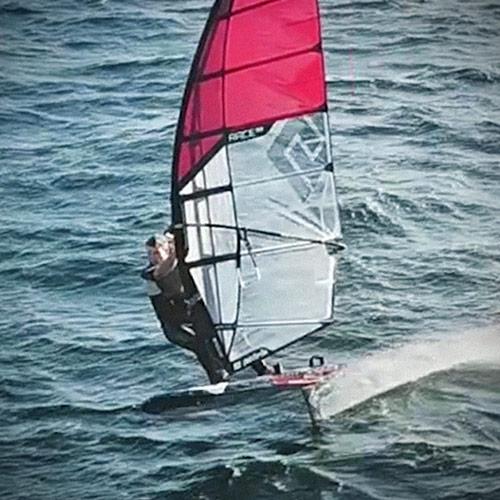FAQ
These knowledge base and FAQ list will be permanently updated and will grow over time.
Please send us your topics and questions to be added here!
4WAVE vs. 5WAVE
Q: What's the difference between 4Wave and 5Wave as these two sails look very simular.
A: We recommend the 5Wave for lighter riders who want a more neutral sail which is more stable in high winds. Don't be afraid of the 5 battens. The 5Wave feels light and neutral with less backhand-power than the 4Wave and it's NOT like other brands' 5-batten heavy-handed onshore power wave sails. It still got an amazing low-end. As a summary we recommend the 5Wave for windy Pozo-style jumping conditions, lighter riders who want an excellent allround sail that's stable and neutral and anybody who prefers a more high-aspect design for faster rotations and better wave-freestyle performance and better ducking. Our riders Sammy Ferraro, Nil Bacon, Stine Bottern and Marion Mortefon (all below 75kgs) are using the 5Wave.
The 4Wave on the other hand is our around-the-globe power wave sail as the higher and wider panels fill in more and as a result create more drive and more power. It offers more drive and more power than the 4Wave and has this crazy low-end which allows you to pick the 4Wave 0.3 to 0.5 sqm smaller than "normal" wave sails out there. We recommend the 4Wave to heavier riders and all power-style riders. The sail's precise on-off characterstics and more power on the backhand make it the first choice for onshore and sideshore Waveriding and jumping in gusty and difficult conditions. If you need planing power in the shore break and like a bit more response from your sail while waveriding chose the 4Wave. Our riders Simon Thule and Henning Terstiege (85kgs+) are mostly using the 4Wave. The 4Wave is a touch softer than the 5Wave and will react more to your sailing while the 5Wave feels a bit stiffer, more stable and locked in. Both sails have an amazing trim range and can be adjusted to a broad variety of conditions. If you wish to mix the sail ranges we recommend to pick your big sizes as 4Waves and small sizes as 5Waves.
AEON DNA-M to DNA-H
Q: What does DNA mean on the AEON front and tail wings?
A: DNA explains the material mix of our wings, just like the human DNA defines who we are. DNA-H means HARD - more stiffness, more control. DNA-M meaning MEDIUM stiffness for a more budget-friendly alternative with a really great low end power. DNA-X is our secret formula for the stiffest and thinnest construction possible today.
AEON DIM-S to DIM-XL
Q: What does DIM mean on the AEON masts?
A: DIM stands for "Dimension" and explains the volume and dimensions of the masts. Dimension S (DIM-S) being the thinnest and fastest and Dimension XL (DIM-XL) being thicker and wider but stiff in flex and twist, creating a budget-friendly version of the pure competition masts. The 95 masts are more suitable for medium to high wind foil slalom while the 100 masts would be preferred for course racing and light winds as they offer less top speed but increased stiffness for bigger front wings.
AEON FOIL FOR WINDSURF AND WINGING
Q: Can you configure the AEON foil for wing use?
A: Yes. We will offer wing-specific fuselages and masts soon. Bastien Escofet was truly dominating the GWA in both racing and freestyle on the AEON foil wings.
BOOM CURVES and BOOM WIDTH
Q: Why do you offers booms in similar lenghts that have different curves and widths?
A: Think of the boom with as the more important factor than the boom length. So pick your boom curve (width) first according to the width of your board. The S-Curve works best on any wave board and all freerride shapes up to 64. From 65-70cm board with pick the M-Curve or L-Curve for a more race-oriented sailing position on the board. From 70 to 84cm pick the L-Curve or XL-Curve for a more race-oriented sailing position. For boards over 85cm width pick the XL Curve. Then as a second step pick your length according to your sail range. Only with the matching boom curve you will be in a comfortable stance and sailing position. Negative examples: An S-Curve boom on an 89cm foil board will result in a way too upright body position with very limited control over your gear whilst and XL-Curve boom on a wave board will feel impossible to ride with the rider being too far outboard or the sail being too far on the lee-ward side while accellerating.
BRASS INSERTS FOR FIN AND FOIL
Q: Why don't you use harder v2a steel inserts instead of the softer brass?
A: V2A steel screws in a V2A insert is very likely to get stuck as two materials of similar hardness will create too much friction inside the thread.
CUTOUT SIZE ON FOIL BOARDS
Q: Why does the Foil Comp board have bigger cutouts than the Foil Race and why no cutouts on the FoilRide?
A: The more mast rake you use the more you must compensate for the negative angle of attack on the frontwing by sinking the tail. A board with cutouts will pump better but be less stable during the take-off. As freeride foils usually don't use excessive rake, we've opted for a more stable and gentle accelleration on the FoilRide while the medium cutouts on the FoilRace allow the use of raked foils but don't make the board too loose and nervous yet. The big FoilComp cutouts are a zero-compromise racing design for instant and brutal accelleration while pumping the board with foil rakes around 3-4 degrees and at the same time less drag on touch downs (This design is made for advanced riders with a good overall board control).
FOIL AND FIN SAIL BASIC DESIGN DIFFERENCES
Q: Can I use a foil sail on the fin and a fin sail on the foil?
A: Of course the sails work best in the environment they've been designed for but as a basic advise we could say: A foil sail is a more high-aspect sail design with a stiffer profile and less backhand pressure. So if you don't have any trouble to go planing and like a light-handed sail with a shorter boom you may use the foil sail on the fin and actually love it as a freeride sailor, while the slalom sailor will miss the loading of the sail and lack some power for sure. The foil sail will be more neutral in gusty winds while the medium or low aspect hybrid or pure fin sail will give you more grunt, more downwind accelleration and more power in total. Fin sails on the foil on the other hand are more of a compromise as you want the most steady and stable flight on the foil. In light winds the fin sail might still be a valid options for beginners and intermediates on the foil as it will be easier to pump and gives you more response on the boom. Control-wise the foil sail is the clear winner for foil use though. If you're looking for one sail to do it all in freeride let you weight and skill level guide you. More advanced and lighter riders can choose the high-aspect sail for fin and foil and won't actually be facing much of a compromise. If you're foiling in light wind only and are a heavy rider switching to fin as soon as you can choose the fin sail as the hybrid option. But if you want the true and full performance on foil and fin pick both the dedicated foil and fin sail for each discipline as this is not a marketing joke but a real and well-though design adaption for the very different requirements of fin and foil use.



